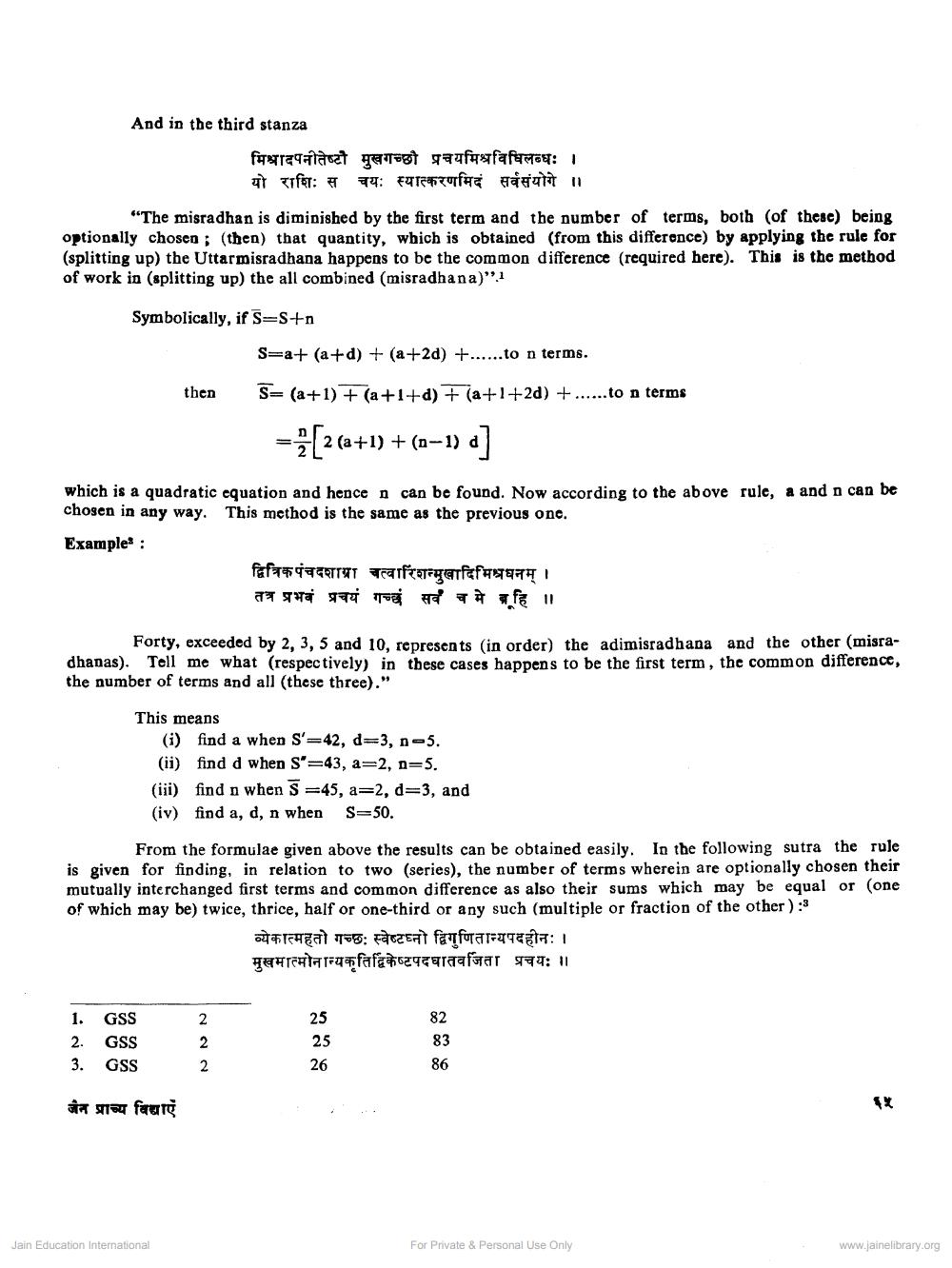________________
And in the third stanza
मिश्रादपनीतेष्टौ मुखगच्छौ प्रचयमिश्रविधिलब्धः । यो राशिः स चयः स्यात्करणमिदं सर्वसंयोगे ।
"The misradhan is diminished by the first term and the number of terms, both (of these) being optionally chosen : (then) that quantity, which is obtained (from this difference) by applying the rule for (splitting up) the Uttarmisradhana happens to be the common difference (required here). This is the method of work in (splitting up) the all combined (misradhana)".1
herey applying the rule for
Symbolically, if S=S+n
S=a+ (a+d) + (a+2d) + ......to n terms.
then
S= (a +1) + (a +1+d) + (a +1+2d) +......to n terms
= [2 (2+1) +(n-1)]
which is a quadratic equation and hence n can be found. Now according to the above rule, a and n can be chosen in any way. This method is the same as the previous one. Example :
द्वित्रिकपंचदशामा चत्वारिंशन्मुखादिमिश्रधनम् । तत्र प्रभवं प्रचयं गच्छ सर्व च मे ब्रूहि ॥
Forty, exceeded by 2, 3, 5 and 10, represents (in order) the adimisradhana and the other (misradhanas). Tell me what (respectively) in these cases happens to be the first term, the common difference, the number of terms and all (these three)."
This means
(i) find a when s'=42, d=3, n-5. (ii) find d when s'=43, a=2, n=5. (iii) find n when S=45, a=2, d=3, and (iv) find a, d, n when S=50.
From the formulae given above the results can be obtained easily. In the following sutra the rule is given for finding, in relation to two (series), the number of terms wherein are optionally chosen their mutually interchanged first terms and common difference as also their sums which may be equal or (one of which may be) twice, thrice, half or one-third or any such (multiple or fraction of the other) :3
व्येकात्महतो गच्छ: स्वेष्टघ्नो द्विगुणितान्यपदहीनः । मुखमात्मोनान्यकृतिविकेष्टपदधातवर्जिता प्रचयः ।।
1. GSS 2. GSS 3. GSS
2 2
जैन प्राच्य विद्याएँ
Jain Education International
For Private & Personal Use Only
www.jainelibrary.org




